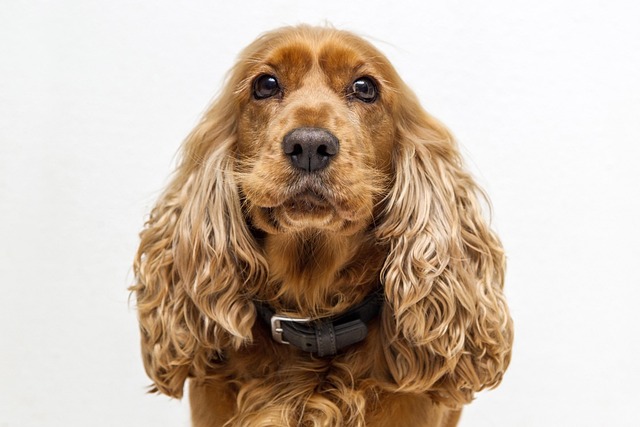
How do I teach my dog to socialize?
Watching your dog cower behind your legs when another pup walks by can leave you feeling helpless. Socializing isn’t about forcing them to be the life of the party—it’s about helping them feel safe in the world,
It’s a phrase you’ve probably heard before—“You can’t teach an old dog new tricks.” Maybe it’s been tossed around when chatting with friends, or perhaps you’ve wondered about it yourself as your canine companion enters their golden years. The idea that dog training age limits exist is deeply ingrained in popular culture, leading many pet owners to believe that once a dog reaches a certain age, their ability to learn is all but gone. But is it really too late to train an old dog? As someone who’s spent years working with dogs of all ages, I can confidently say this myth deserves a second look. Today, we’ll dig into the science, practical experience, and heartwarming stories that prove senior dogs are not only capable of learning—they often thrive when given the right guidance.
First, it’s important to understand what happens as dogs age and how it affects their learning. Just like humans, senior dogs can experience changes in cognitive function and physical capability. Their senses might dull a bit; joints may ache, and their energy reserves aren’t quite what they used to be. However, none of these changes mean the window for training has closed. In fact, older dogs often have a steadier temperament that can actually make them more receptive to certain kinds of training. They’re less likely to be distracted by every passing squirrel, and they tend to have a solid bond with their humans—a key factor in successful learning. Research has shown that while the learning process might be a tad slower, senior dogs are absolutely capable of picking up new behaviors and commands. The trick is to meet them where they are.
So, what does training senior dogs effectively look like in practice? It starts with acknowledging their unique needs. Positive reinforcement is your best friend here—think treats, gentle praise, and lots of encouragement. Older dogs respond beautifully to clear, consistent rewards, especially when food motivation is high. Because their attention spans and stamina may be reduced, training sessions should be shorter and less physically demanding. If your dog has arthritis or other mobility challenges, avoid exercises that require jumping or quick turns. Instead, focus on cues they can perform comfortably, like “sit,” “stay,” or “touch.” Environmental adjustments, such as using non-slip rugs for traction or ramps for easier access to favorite spots, can also make training more accessible and enjoyable for aging pups.
If you’re wondering how to get started or want some dog training tips for older dogs, here’s what I recommend. Begin with a quick health check—consult your veterinarian to rule out any medical issues that could impact your dog’s ability to participate. Choose a quiet, distraction-free area for your sessions to help your dog focus. Keep lessons brief, ideally just five to ten minutes, and always end on a positive note. Use high-value treats to motivate your dog, and consider clicker training for clear communication. If your dog struggles with hearing or vision loss, try using hand signals or gentle touch cues rather than relying solely on verbal commands. Patience is crucial; older dogs might take a little longer to process new information, but consistency will pay off. And don’t underestimate the value of interactive toys and puzzle feeders—they’re great for mental stimulation and can be tailored to your dog’s ability level.
Still skeptical? Let’s look at a few real-life examples that answer the question, “Can older dogs learn new tricks?” One of my favorite cases involved a twelve-year-old Labrador named Rosie. Her family adopted her from a shelter, worried her age might make training impossible. With a simple routine of daily five-minute sessions and lots of chicken treats, Rosie not only mastered basic obedience but also learned to ring a bell to go outside. Another memorable dog, Max, a ten-year-old beagle, was notorious for pulling on the leash. With the help of a gentle harness and patient, reward-based training, Max’s walks became peaceful strolls instead of tug-of-war matches. Veterinarians often see similar success stories and emphasize that mental engagement is as important for aging dogs as physical care—training sessions help keep senior minds sharp and spirits high.
So where does that leave us on the debate over dog training age limits? The evidence—both scientific and anecdotal—makes it clear: it’s never too late to start training your dog. Whether you’re introducing a new cue, addressing unwanted behaviors, or simply adding a bit of fun and structure to your dog’s day, age should never be a barrier. In my experience, the joy and sense of accomplishment that come from seeing an older dog light up with understanding are hard to match. If you’ve been hesitating, take this as your sign to start. Your dog, no matter how many birthdays they’ve celebrated, still has plenty to learn—and plenty to teach you in return. Embrace the journey, stay patient, and remember that every dog, young or old, deserves the chance to shine.

Watching your dog cower behind your legs when another pup walks by can leave you feeling helpless. Socializing isn’t about forcing them to be the life of the party—it’s about helping them feel safe in the world,

Teaching an older dog new potty habits isn’t about starting over—it’s about understanding their past. Maybe they spent years in a shelter, or perhaps their routine got disrupted by a move.

Training an older dog to stop excessive barking can feel challenging, but with patience and the right approach, it's absolutely possible.

Older dogs with aggression issues break your heart in a unique way. That gray-muzzled companion who once greeted strangers with a wag might suddenly snap, leaving you confused and worried. The good news?

Training a Chihuahua isn’t about age—it’s about understanding their unique personality, readiness, and building trust for lasting success.

Transform your dog's recall by making YOU the best distraction—turn training into a rewarding game that beats even squirrels or other dogs every time.